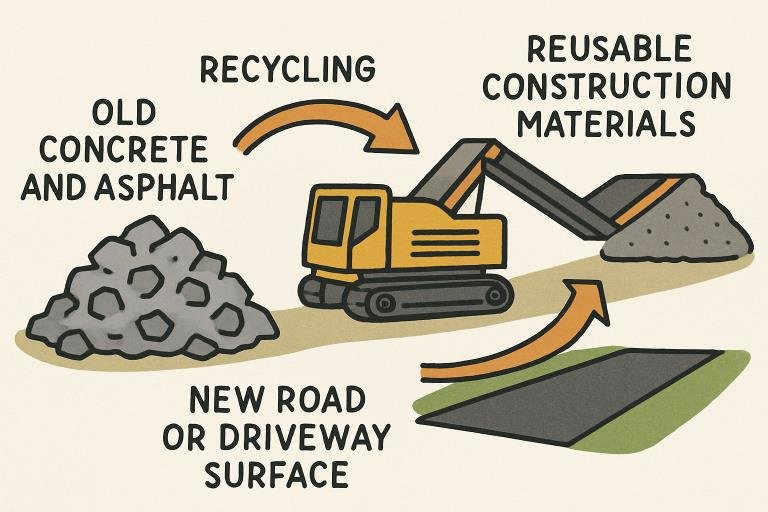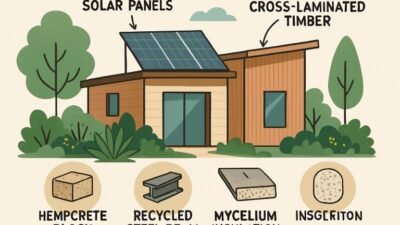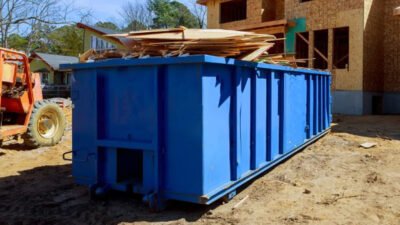Effectively managing concrete and asphalt waste is a growing priority for construction professionals, property managers, and municipalities alike. Materials like concrete and asphalt are essential for our built environment, but their disposal can have lasting consequences if not approached thoughtfully. Today, innovative disposal solutions are emerging that not only benefit the environment but also offer significant cost and logistical advantages. For those looking for trusted partners in responsible material disposal, Arcosa Crushed Concrete provides reliable services tailored to these needs.
Traditional dumping and demolition practices are rapidly being replaced by strategies that emphasize recycling, reusing, and transforming waste into valuable resources. With construction volumes increasing each year, the pressure to find sustainable disposal alternatives has never been greater. By integrating eco-conscious methods, the construction sector can significantly reduce landfill usage and enhance long-term project efficiencies.
- Recycling and innovative techniques offer substantial reductions in landfill waste and natural resource consumption.
- Approaches such as rubblization and the use of recycled aggregates are supporting green construction and infrastructure development worldwide.
- Modern disposal methods not only benefit the environment but also deliver tangible cost savings for projects.
Recycling Concrete and Asphalt
One of the most effective ways to handle concrete and asphalt waste is through recycling. When structures are demolished, specialized recycling equipment processes old concrete and asphalt into reusable aggregates. These recycled materials can replace virgin sand, gravel, and stone in new construction projects ranging from driveways to highways. According to the U.S. Environmental Protection Agency, recycling construction debris dramatically decreases the demand for new resources and helps cut back greenhouse gas emissions caused by extraction and processing.
The environmental benefits are substantial: less debris ends up in landfills, conservation of natural habitats is promoted, and cities reduce their extraction of raw materials. On the economic side, utilizing recycled aggregates often results in lower material and transport costs, providing a direct positive impact on project budgets.
Rubblization: Turning Old Pavement into Foundations
Rubblization is a powerful technique gaining traction in roadway and runway projects. This approach crushes existing concrete pavement into a flexible layer of compacted material, which then acts as the base for new surfaces. Since rubblization is performed on-site, it eliminates the costs and environmental toll of hauling demolition debris away. This innovation streamlines repaving projects, reduces project durations, and enhances structural integrity by providing a stable foundation.
Utilizing Recycled Aggregates
Using recycled concrete and asphalt as aggregates is transforming materials management in the construction sector. Once concrete has been crushed down and contaminants removed, it serves as a high-quality substitute for newly mined stone in applications like base layers for roads, parking lots, sidewalks, and building foundations. This not only diverts material from landfill but also allows for the continual repurposing of construction and demolition waste in the building cycle.
The shift to recycled aggregates is widespread, with both commercial and municipal projects benefiting from this practice. Not only does it conserve diminishing supplies of natural stone, but it also provides comparable strength and durability, making it a sustainable and reliable choice for long-term infrastructure.
Innovations in Asphalt Recycling
Road construction and paving crews are increasingly turning to recycled asphalt pavement (RAP) to deliver robust roadways while aligning with sustainability goals. The process involves milling, grinding, and processing old asphalt into fine particles ready to be integrated with fresh materials. Asphalt mixes with high RAP content are now standard for highways, residential streets, and parking facilities, reducing dependence on petroleum products.
The shift to recycled asphalt contributes considerably to lowering energy consumption and carbon emissions in infrastructure projects. Advanced processing technologies ensure the new roadways are as durable and weather-resistant as those made with entirely new asphalt.
Environmental and Economic Advantages
- Conservation of Resources:By reusing materials, demand for new resources is substantially reduced, saving natural habitats and supporting biodiversity.
- Waste Reduction:Upcycling concrete and asphalt significantly cuts down on landfill volume, promoting efficient land use.
- Cost-Effective Projects:Lowered material, hauling, and disposal costs lead to direct savings for builders, governments, and property owners.
- Improved Energy Management:Reduced manufacturing and transportation requirements translate to lower overall energy expenditures for projects.
Challenges and Considerations
Despite promising benefits, creative disposal solutions require careful planning and quality assurance. Recycled materials must meet project and regulatory specifications for safety, performance, and durability. It’s essential to work with reputable recycling facilities and remain informed about changing local and federal regulations regarding materials acceptance and use. Diligent oversight will ensure projects realize the full value of these eco-friendly techniques while guaranteeing long-term performance.
Conclusion
Embracing creative approaches to the disposal of concrete and asphalt is essential for sustainable construction. With options like recycling, rubblization, and the use of recycled aggregates, both environmental responsibility and economic efficiency can be achieved. By staying informed and choosing innovative practices, the industry is paving the way to a cleaner, greener, and more resilient future.



